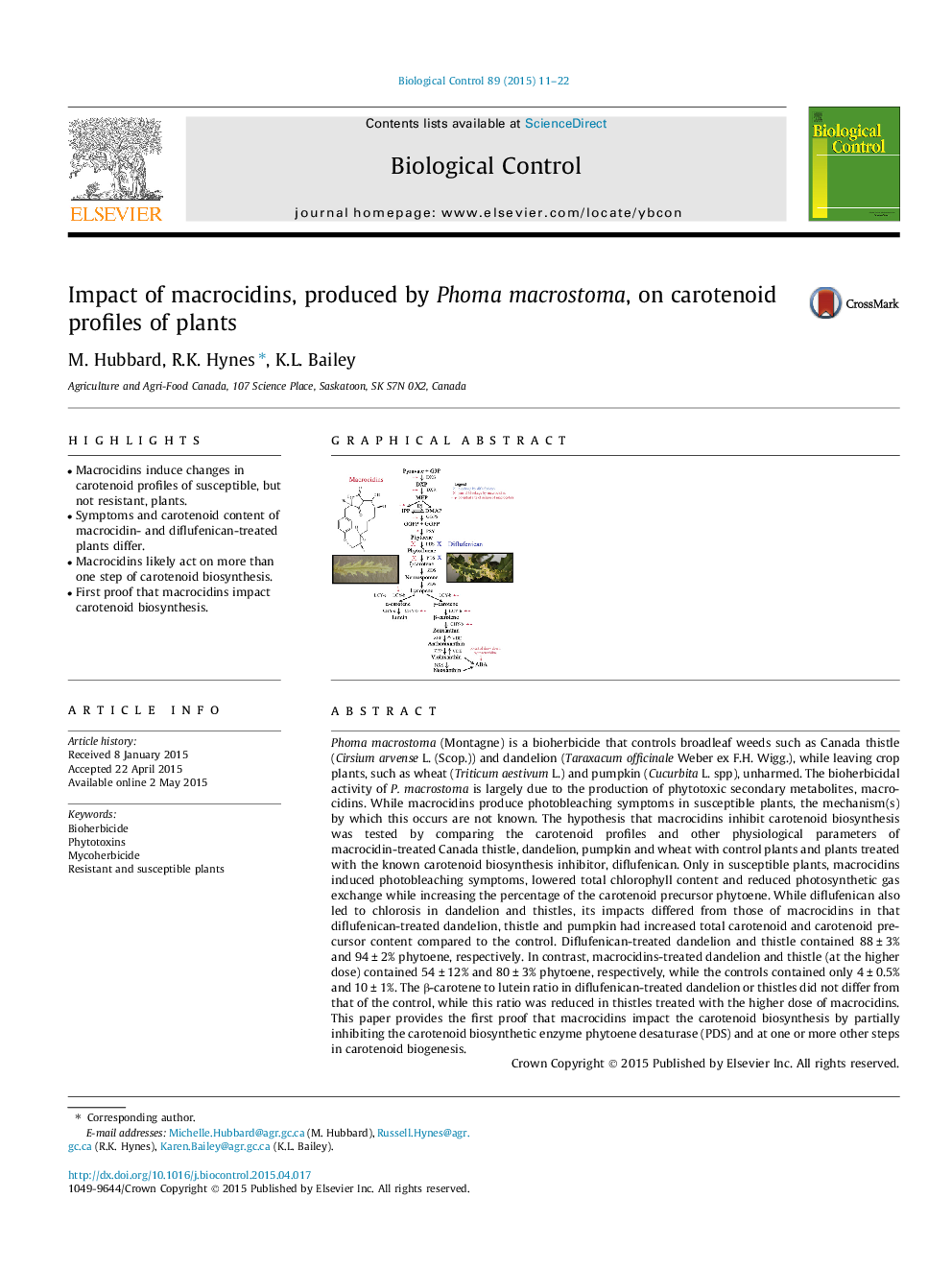| کد مقاله | کد نشریه | سال انتشار | مقاله انگلیسی | نسخه تمام متن |
|---|---|---|---|---|
| 4503740 | 1624245 | 2015 | 12 صفحه PDF | دانلود رایگان |

• Macrocidins induce changes in carotenoid profiles of susceptible, but not resistant, plants.
• Symptoms and carotenoid content of macrocidin- and diflufenican-treated plants differ.
• Macrocidins likely act on more than one step of carotenoid biosynthesis.
• First proof that macrocidins impact carotenoid biosynthesis.
Phoma macrostoma (Montagne) is a bioherbicide that controls broadleaf weeds such as Canada thistle (Cirsium arvense L. (Scop.)) and dandelion (Taraxacum officinale Weber ex F.H. Wigg.), while leaving crop plants, such as wheat (Triticum aestivum L.) and pumpkin (Cucurbita L. spp), unharmed. The bioherbicidal activity of P. macrostoma is largely due to the production of phytotoxic secondary metabolites, macrocidins. While macrocidins produce photobleaching symptoms in susceptible plants, the mechanism(s) by which this occurs are not known. The hypothesis that macrocidins inhibit carotenoid biosynthesis was tested by comparing the carotenoid profiles and other physiological parameters of macrocidin-treated Canada thistle, dandelion, pumpkin and wheat with control plants and plants treated with the known carotenoid biosynthesis inhibitor, diflufenican. Only in susceptible plants, macrocidins induced photobleaching symptoms, lowered total chlorophyll content and reduced photosynthetic gas exchange while increasing the percentage of the carotenoid precursor phytoene. While diflufenican also led to chlorosis in dandelion and thistles, its impacts differed from those of macrocidins in that diflufenican-treated dandelion, thistle and pumpkin had increased total carotenoid and carotenoid precursor content compared to the control. Diflufenican-treated dandelion and thistle contained 88 ± 3% and 94 ± 2% phytoene, respectively. In contrast, macrocidins-treated dandelion and thistle (at the higher dose) contained 54 ± 12% and 80 ± 3% phytoene, respectively, while the controls contained only 4 ± 0.5% and 10 ± 1%. The β-carotene to lutein ratio in diflufenican-treated dandelion or thistles did not differ from that of the control, while this ratio was reduced in thistles treated with the higher dose of macrocidins. This paper provides the first proof that macrocidins impact the carotenoid biosynthesis by partially inhibiting the carotenoid biosynthetic enzyme phytoene desaturase (PDS) and at one or more other steps in carotenoid biogenesis.
Figure optionsDownload as PowerPoint slide
Journal: Biological Control - Volume 89, October 2015, Pages 11–22